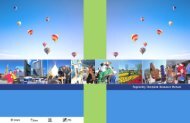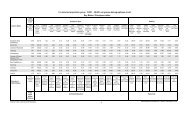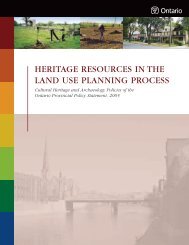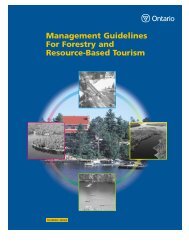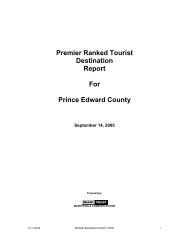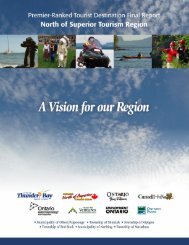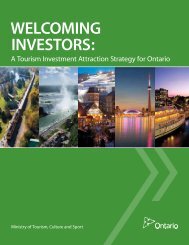Factors Influencing Visitor's Choices of Urban Destinations in North ...
Factors Influencing Visitor's Choices of Urban Destinations in North ...
Factors Influencing Visitor's Choices of Urban Destinations in North ...
Create successful ePaper yourself
Turn your PDF publications into a flip-book with our unique Google optimized e-Paper software.
C. Literature ReviewTourism Attractiveness LiteratureTourism Attractiveness Literature focuses on a discussion <strong>of</strong> the range <strong>of</strong> factors that<strong>in</strong>fluence the attractiveness <strong>of</strong> a dest<strong>in</strong>ation. More formally, Leiper (1990) develops theidea <strong>of</strong> a tourist attraction system, comprised <strong>of</strong> “…3 elements: a tourist or humanelement, a nucleus or central element, and a marker or <strong>in</strong>formative element. A touristattraction comes <strong>in</strong>to existence when all 3 elements are connected.”“Culture as a Determ<strong>in</strong>ant <strong>of</strong> the Attractiveness <strong>of</strong> a Tourism Region”Ritchie and Z<strong>in</strong>s (1978) exam<strong>in</strong>ed factors that <strong>in</strong>fluence the overall attractiveness <strong>of</strong> atourism region and measured the relative contribution <strong>of</strong> different social and culturalelements to the attractiveness <strong>of</strong> a tourism region.A survey <strong>of</strong> 201 <strong>in</strong>formed <strong>in</strong>dividuals represent<strong>in</strong>g a wide range <strong>of</strong> tourism and culturaldevelopment sectors was conducted <strong>in</strong> the prov<strong>in</strong>ce <strong>of</strong> Quebec. The results <strong>of</strong> this studysuggest that general factors such as natural beauty and climate were the most importantdeterm<strong>in</strong>ants <strong>of</strong> the attractiveness <strong>in</strong> the region followed <strong>in</strong> order by cultural and socialcharacteristics, attitudes towards tourists, accessibility <strong>of</strong> the region, <strong>in</strong>frastructure <strong>of</strong> theregion, price levels, sport/recreational facilities, and shopp<strong>in</strong>g/commercial facilities.One <strong>of</strong> the significant drawbacks 20 <strong>of</strong> this study is related to sample bias. The <strong>in</strong>dividualswho participated <strong>in</strong> this survey represented a particular group <strong>of</strong> tourism pr<strong>of</strong>essionalsrather than users <strong>of</strong> culture-tourism facilities.“A Framework <strong>of</strong> Tourist Attraction Research”Lew (1987) summarizes a range <strong>of</strong> approaches from previous research to categorize theattractions. In particular, Lew identified three approaches to the topic and called theseapproaches the ideographic perspective, the organizational perspective, and the cognitiveperspective.1. The ideographic perspective refers to the general attributes <strong>of</strong> a place, <strong>in</strong>clud<strong>in</strong>gnatural beauty, climate, culture, social customs, etc. The ideographic perspective does notprovide an assessment <strong>of</strong> quality <strong>of</strong> a particular attraction, quality <strong>of</strong> management, touristmotivation, and preference for different attraction. Moreover, there is no discussion <strong>of</strong>spatial relationship between different locations.2. The organizational perspective does not necessarily exam<strong>in</strong>e the attractionsthemselves, bur rather focuses on spatial elements (i.e. <strong>in</strong> relation to other attractions),capacity to accommodate large number <strong>of</strong> tourists and provide with services (i.e. lodg<strong>in</strong>g,food, merchandise), and the temporal nature <strong>of</strong> attractions (a year-round flow <strong>of</strong> touristsvs. seasonal flow). Scale is used to categorize the spatial relationship <strong>of</strong> an attraction toother attractions. The bottom l<strong>in</strong>e <strong>of</strong> this approach is to provide <strong>in</strong>sight <strong>in</strong>to theorganization <strong>of</strong> tourist attractions.20 Po<strong>in</strong>ted out by Z<strong>in</strong>s (1978).42


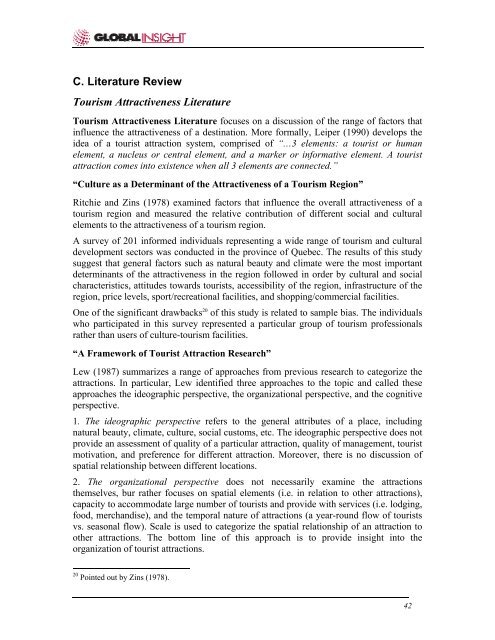
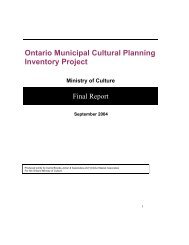
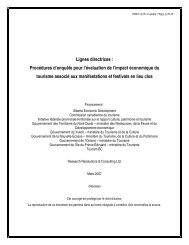
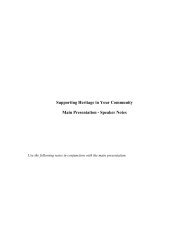
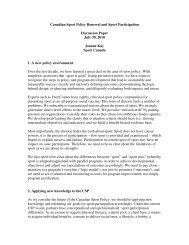
![THIS AGREEMENT made this [date], between [name of owner] (the ...](https://img.yumpu.com/49827605/1/158x260/this-agreement-made-this-date-between-name-of-owner-the-.jpg?quality=85)
